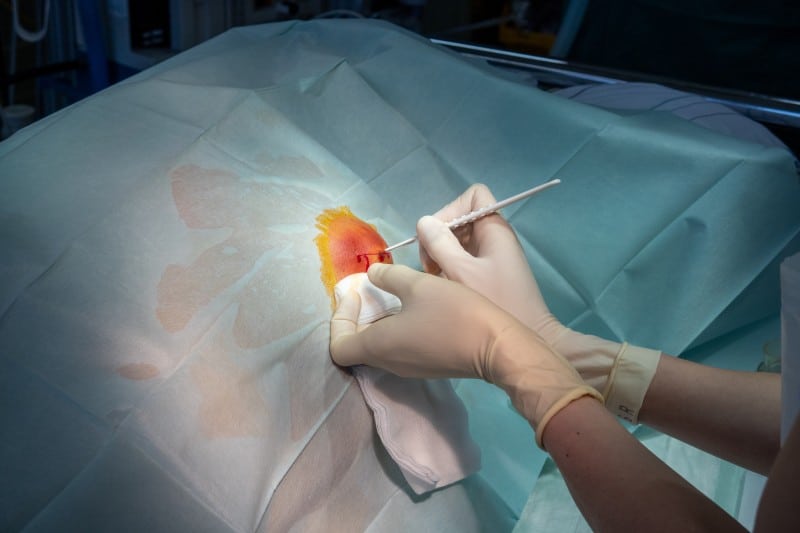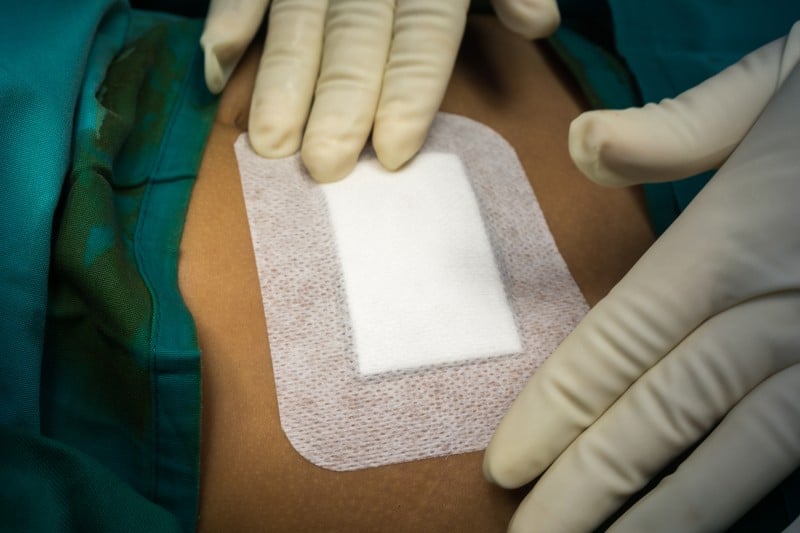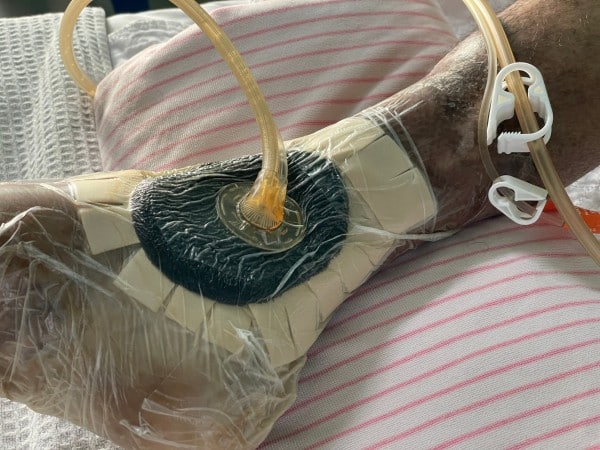Dead Space in Acute and Chronic Wounds – Causes and Treatment Approaches

When an area is absent of tissue, creating a void or cavity, it is often referred to as “dead space”. This can occur in both acute and chronic wounds as well as following surgical excisions or drainage of abscesses.
How does dead space form in surgical wounds?
Surgical separation or excision of subcutaneous soft tissue as part of resections, reconstructions, or orthopedic procedures often results in surgical dead space, where damaged vessels can fill the resultant void with fluid. This fluid may be plasma (seroma), lymph fluid, or blood (hematoma). This may serve as a potential site for bacteria growth and potential infection, increasing the incidence of postoperative infection if not addressed.
What are the risks of dead space formation in a wound?
If dead space or sinus tracts form in a wound that is healing by secondary intention or a chronic wound during granulation and contraction, there is the risk that a wound might heal over a cavity or fluid-filled defect and contribute to abscess formation or dehiscence. Fluid-filled dead spaces may also result in patient discomfort, disruption of healing, and poor cosmetic outcomes.
What are the treatment goals for dead space?
Given the complications of dead space, the goal of treatment is by obliterating the space. This may be done in a number of ways, such as filling it with an appropriate dressing. Filling is the preferred term, as “packing” (filling a wound tightly) can lead to dehydration of the wound bed and further damage or degradation of tissue from internal pressure forces.
What are the dressing options for dead space?

Dressing options may include absorptive products such as collagen powder, alginate strips, hydrofiber strips, and plain or antimicrobial gauze strips. Local concentrated antibiotic beads are also used for the management of dead space, especially with bone defects and significant tissue loss. Negative Pressure Wound Therapy may also be considered for both open wounds with dead space and closed incisional wounds.
What are the surgical treatment options for dead space?
In acute surgical instances, techniques to obliterate dead space include tacking sutures, dressings, or drains. Drains can be implanted to prevent fluid accumulation in a space as they allow evacuation of potentially harmful fluids and help to maintain contact between tissue planes. Physicians will dictate drain type and management, and evaluate when to remove.
What are other considerations when using dressings or other products to fill dead space?

When using a dressing to fill a wound, follow the manufacturer’s instructions for use, and cover the entire wound bed, and fill all aspects of the void. Again, do not ‘pack’ the wound tightly. Use a cotton swab to gently guide the dressing material into small or tunneled areas. Draining wounds are most often filled with strip gauze or slightly absorbent materials. Do not apply frayed product or that which cannot be easily retrieved during dressing changes. Document how much product is inserted in dead space and compare it to that removed during each dressing change. Foreign material left behind in the dead space may prolong or prevent healing. A secondary dressing will cover the filled wound. Also, take care to address the periwound area if a dressing is used to ‘wick away’ drainage.
Techniques to address dead space are decided in the plan of care with consideration to the patient’s individual needs, the wound site and exudate management needs, ease of use, and cost-effectiveness.
To learn more about a product indicated for the management of deep and tunneling wounds, please visit https://sanaramedtech.com/fortify-flowable/




